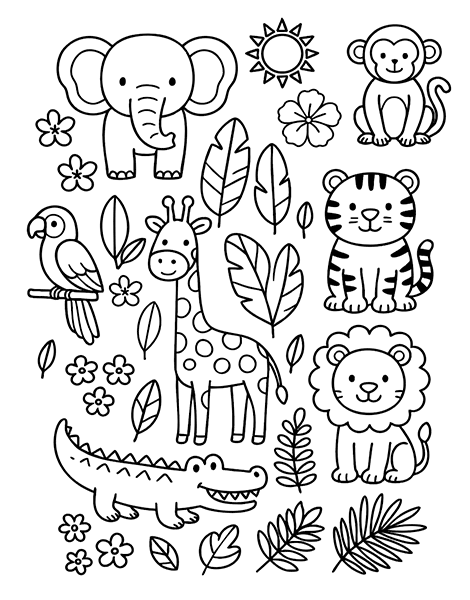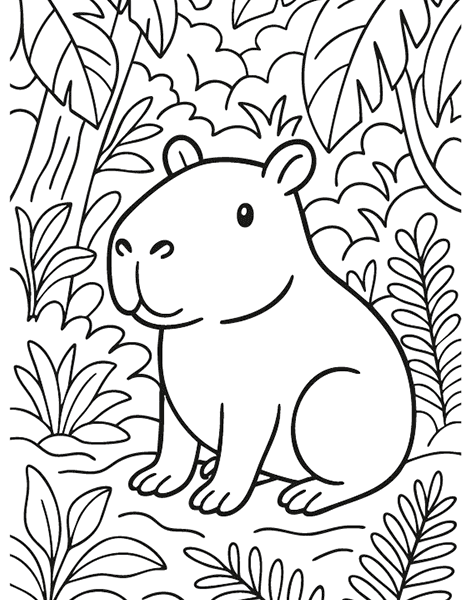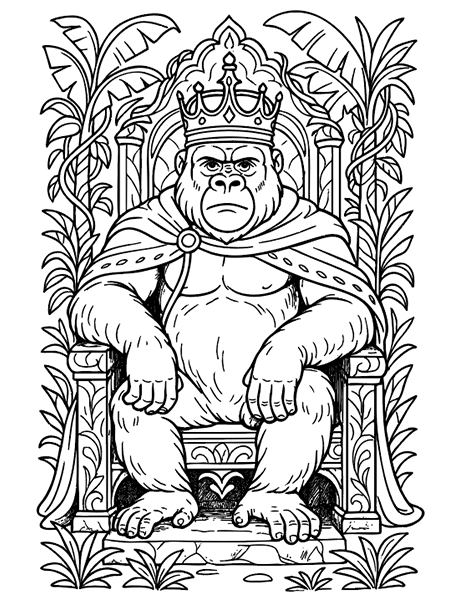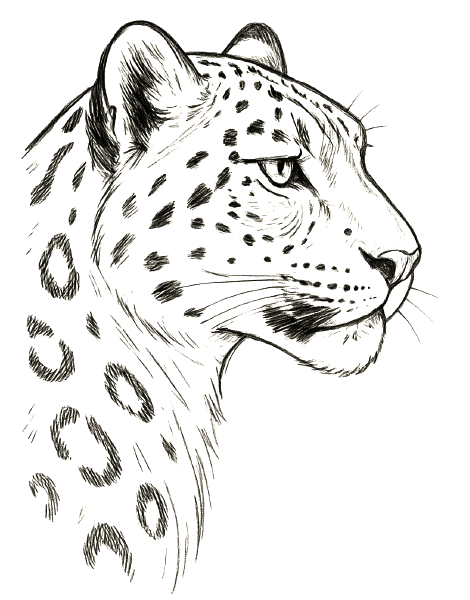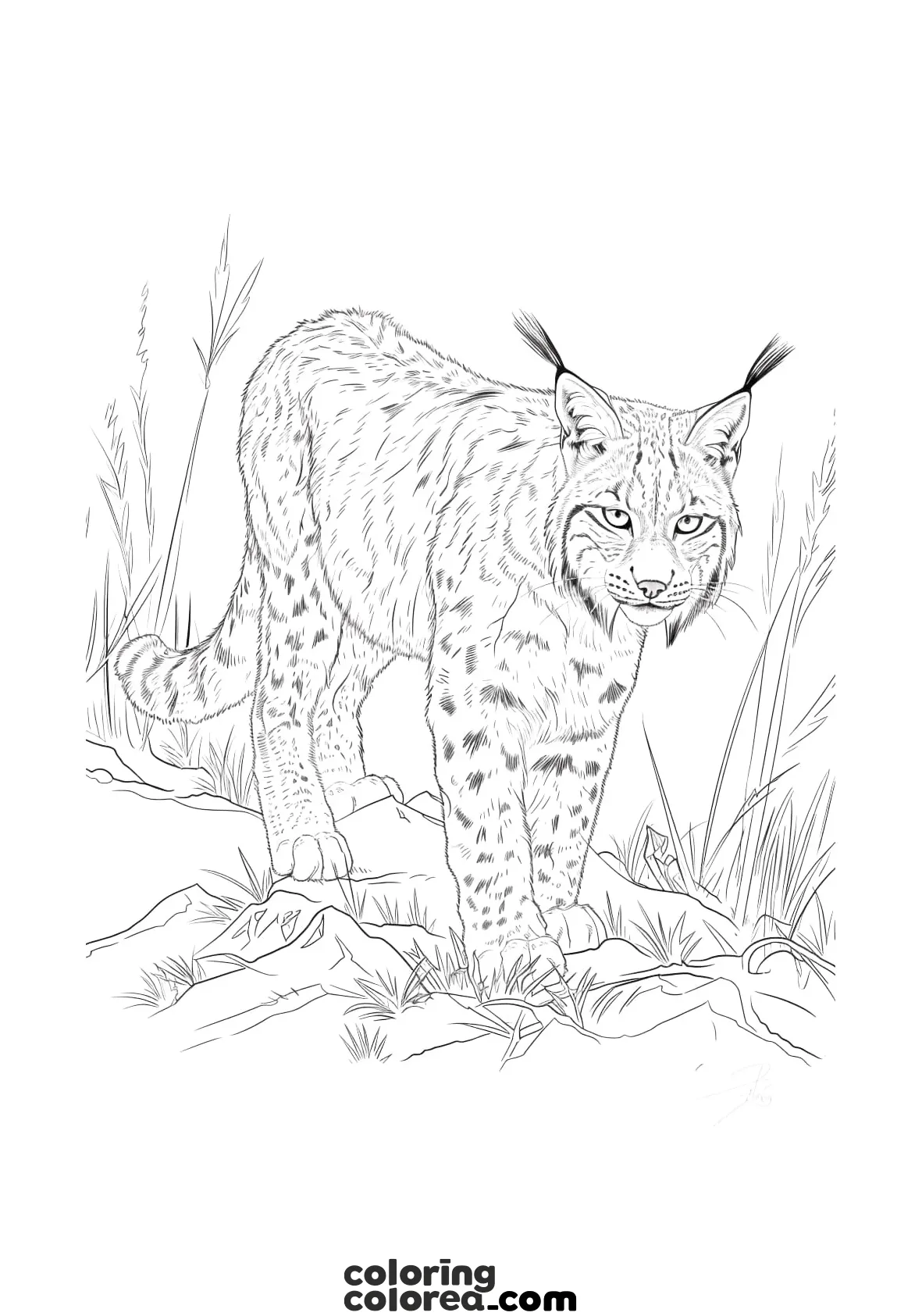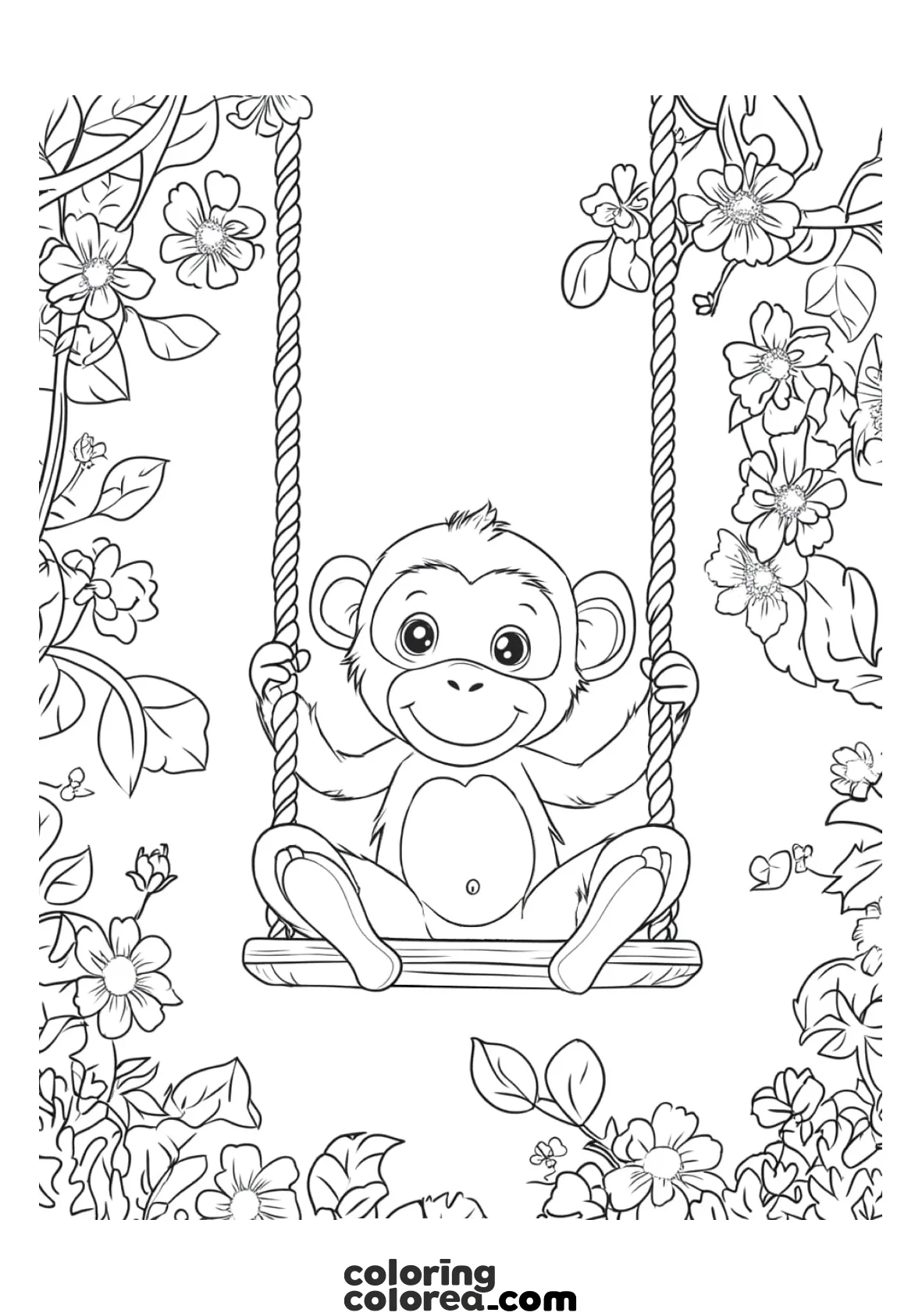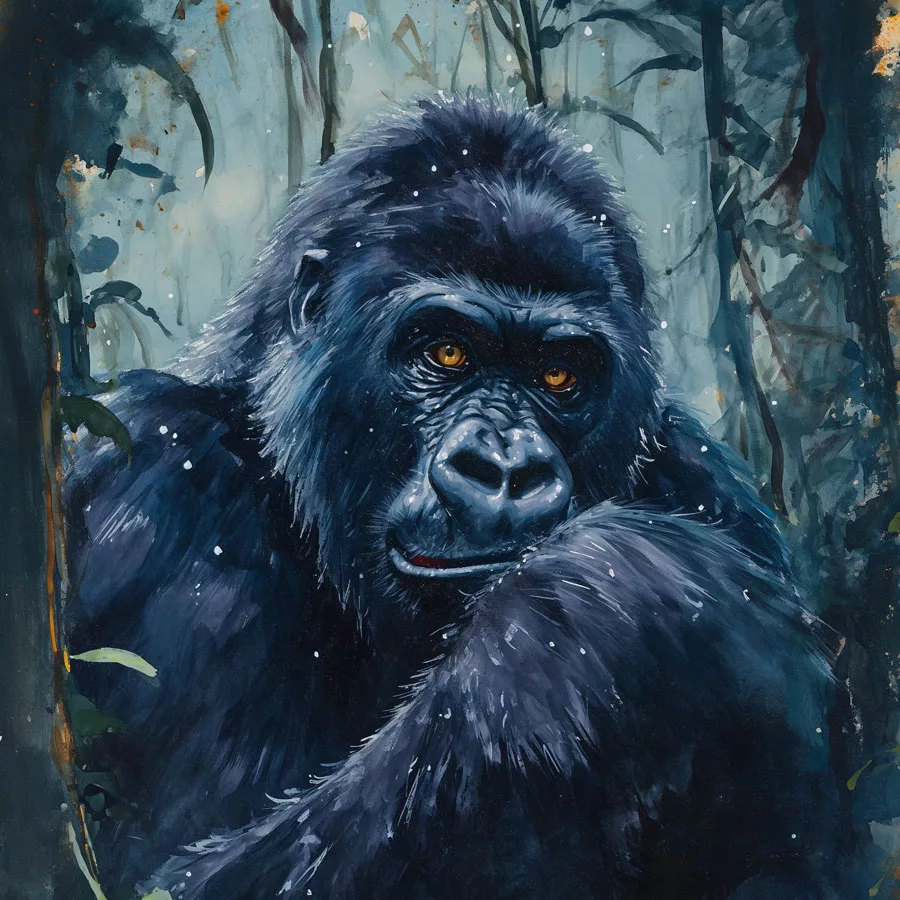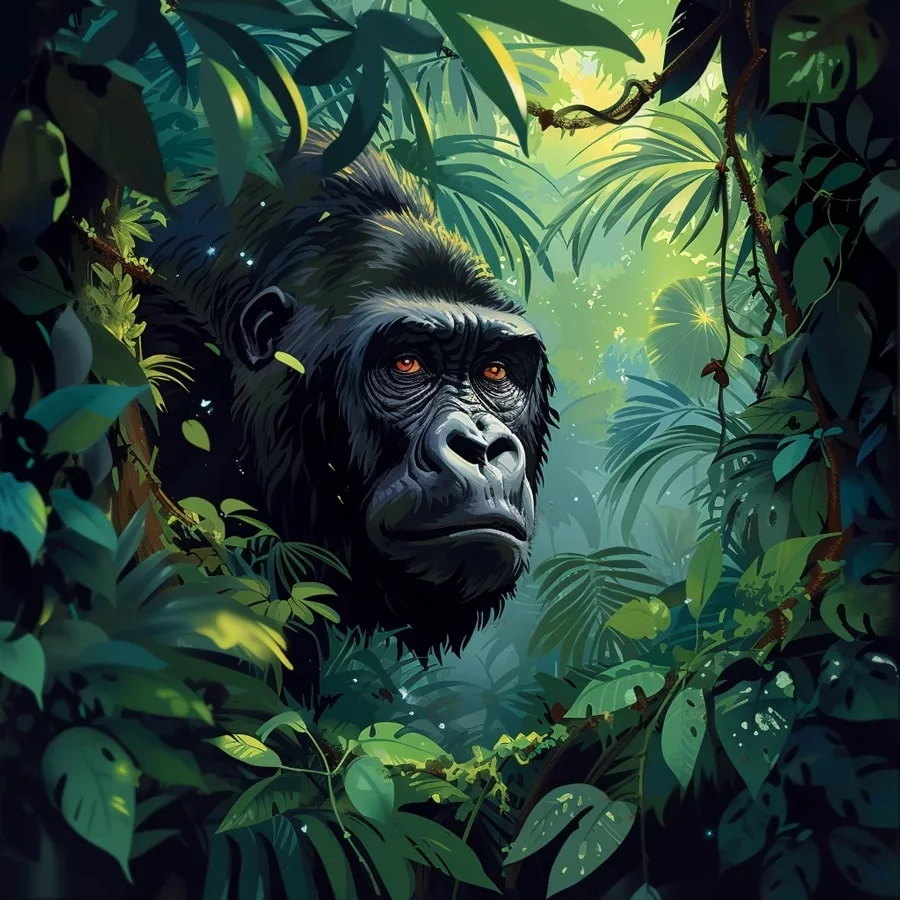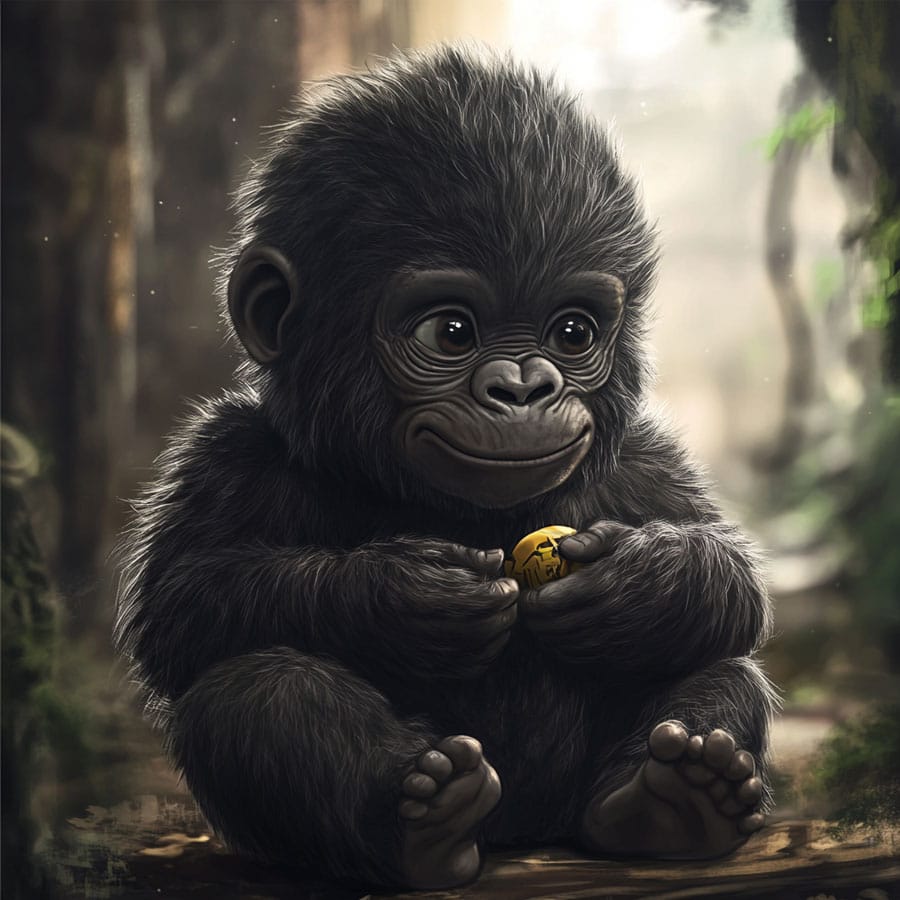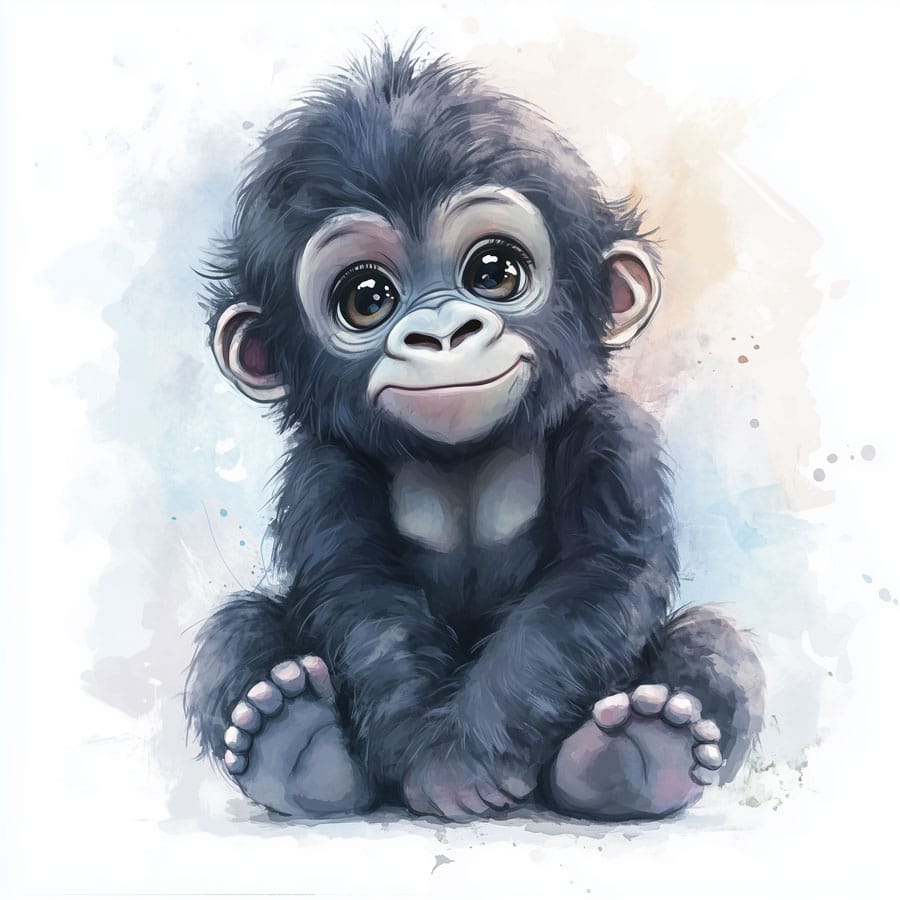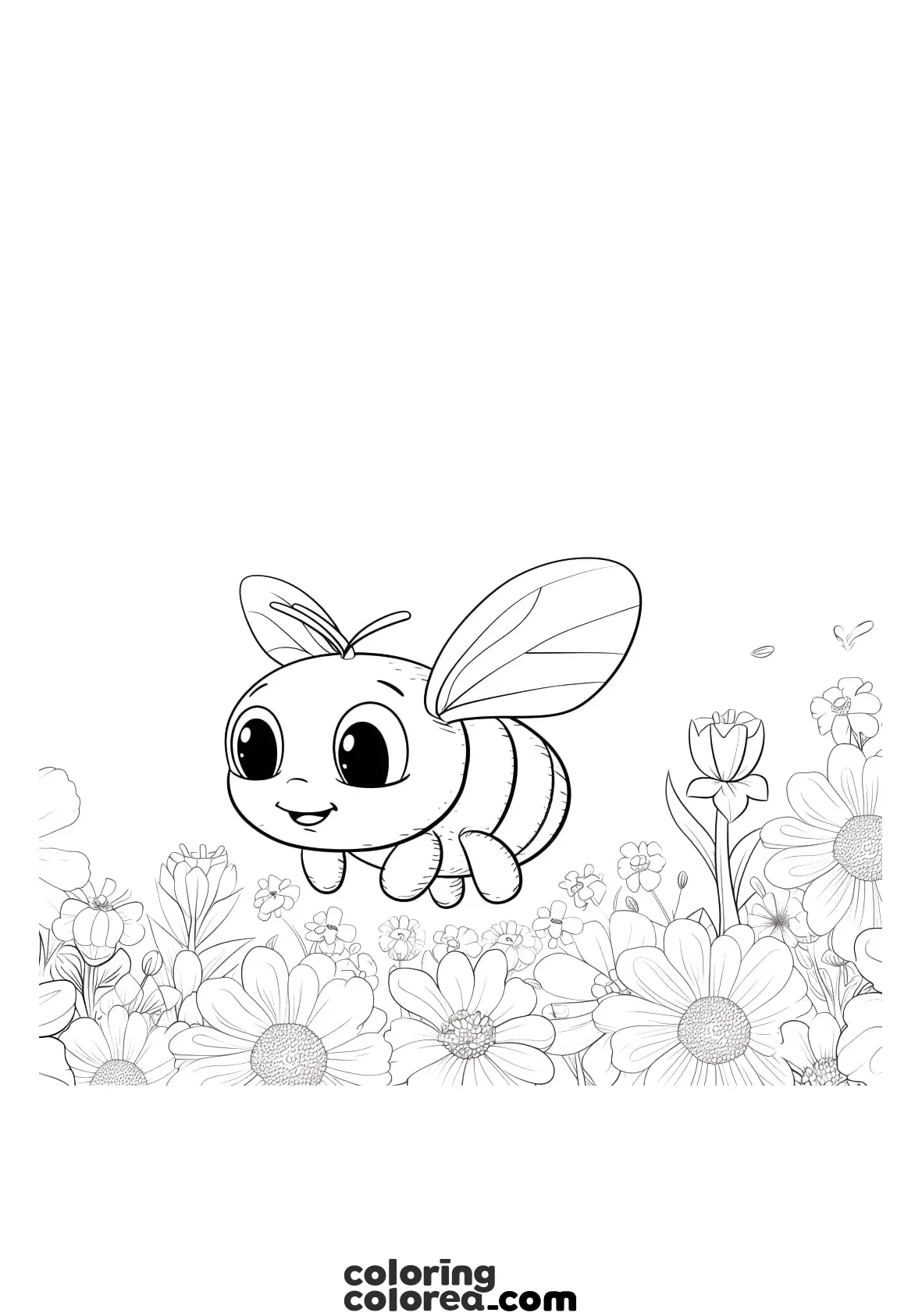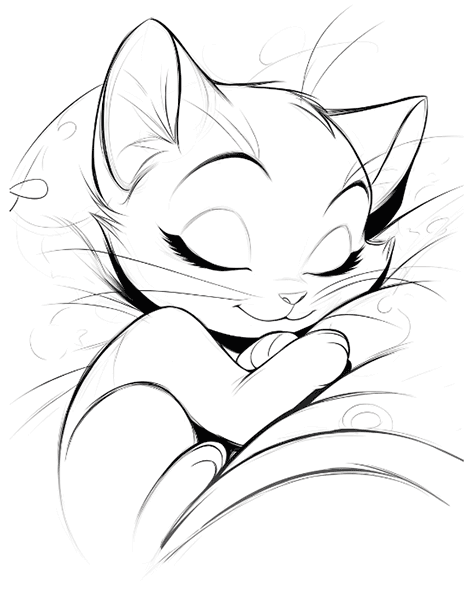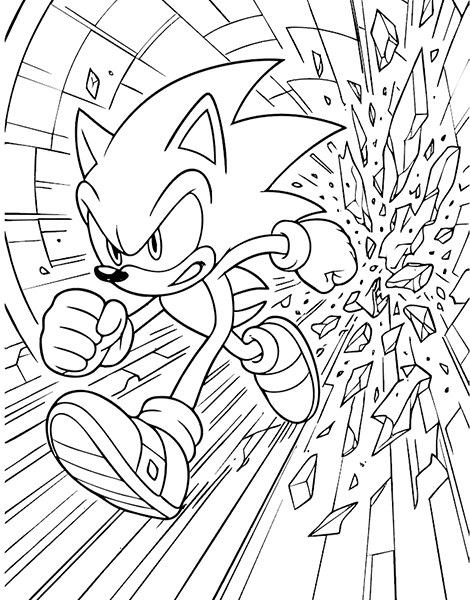Ideas and Tips for Coloring the Mom and Baby Gorilla
The gorillas’ fur is special: although from afar it looks dark gray or black, if you look closely, there are nuances. You can start with a medium gray base for the whole body, but don’t stop there. On top of that layer, try adding touches of black pencil in the deepest areas (like under the arms, on the back, or behind the ears) and some white or very light gray on the parts that protrude or where the light hits. This will give a sense of volume and realism.
The baby gorilla can have a lighter, softer gray. You can also add a warm brown touch in some areas like the eyebrows or hands to show its youth. Don’t forget the eyes: that’s where the emotion is. A touch of dark brown in the iris, leaving a tiny white spot uncolored to give shine, makes them look alive.
The bamboo stalks can be green with a bit of yellow, and their leaves can mix light and darker greens to add dynamism. The ground lends itself to dull greens, browns, or even golden tones if you want to represent a sunset.
Use circular motions and thin layers if you color with pencils. If you prefer crayons, apply moderate pressure and smooth overlapping. And if you use markers, go with thin layers first, letting them dry before adding shadows with more intense tones.
Challenges and Difficulties
One of the biggest challenges here is the fur. Drawing hair is not just filling with color. You have to think about the direction it grows, which parts receive light and which are in shadow. You can simulate strands with fine lines in a single direction, and add soft layers to create depth.
Another challenge is expressing the difference between the mother and the baby. Not only by size, but also by texture. The mom will have denser, darker fur with more shadows. The baby, on the other hand, can have softer strokes, lighter colors, and bigger, brighter eyes.
Also, there is the background. If you decide to color the background, you should make sure it doesn’t take away attention from the gorillas. You can blur the bamboo colors, making them softer and less contrasted so the main figures stand out.
Playing with light is key. Imagining where it comes from can help you know where to put shadows: does it come from the left? Then the right side will have darker areas. These kinds of decisions turn a nice drawing into an amazing one.
Approach to the Animal
Gorillas are fascinating animals. They live in groups and take care of each other. They don’t like conflict. They are calm, intelligent, and have excellent memory. The gesture we see in the drawing, where the mother checks the baby’s head, is called grooming. It’s a way to clean but also to show affection.
Did you know gorillas communicate with sounds, gestures, and looks? They don’t use words, but they express a lot. If a gorilla grunts softly, it’s probably calm. If it beats its chest, watch out! It might be showing strength. But most of the time, they are very peaceful.
In nature, there are famous gorillas. Like Koko, a female gorilla who learned to communicate with sign language. Or Harambe, who sparked a worldwide debate about animal and human behavior. Gorillas always awaken emotions because, in some way, they remind us of ourselves.
And when you see a mom caring for her baby, you understand that affection is not exclusive to humans. It’s in all living beings. When you color this scene, you become part of that moment. You give it life. You celebrate it. And you also learn.

